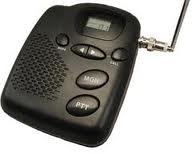 Intercoms, two-way radios, truck stop intercoms, walkie-talkies and other such communication devices are expected to work under some pretty difficult conditions. Users take these devices into the wild, into harsh weather, into cold frosts, dust storms, underwater, and into blistering heat. Some intercoms are expected to brave the rain and the snow without fail, and others are expected to be rugged enough to be accidentally dropped off a small cliff and still work without flaw.
Intercoms, two-way radios, truck stop intercoms, walkie-talkies and other such communication devices are expected to work under some pretty difficult conditions. Users take these devices into the wild, into harsh weather, into cold frosts, dust storms, underwater, and into blistering heat. Some intercoms are expected to brave the rain and the snow without fail, and others are expected to be rugged enough to be accidentally dropped off a small cliff and still work without flaw.
However, it is certainly true that not all two-way radios are created alike. A cheap two-way radio from a bargain store will break under the first real test of heat, water, or clumsiness. On the other side of the scale, commercial sturdy two-way radios will withstand some incredible punishment. How do we know which model of two-way radio will be able to stand the test? The IP Rating.
What is an IP Rating for a two-way radio? Communication equipment’s enclosures are rated by their ability to withstand solid objects, and also liquid objects. These two numbers make up the two-way radio’s IP rating.
For the first number, it goes from 1 to 6, 6 being the strongest. This is essentially how physically strong the casing is, and more precisely how tight it is. A level 2 will withstand fingers entering the casing, a level 4 will withstand small tools, etc. A level 6 will withstand small dust particles from entering the casing.
The second number is how waterproof the two-way radio is. A level 1 says drips of water will not have a harmful effect, and a level 3 will withstand rain. A level 5 would normally be able to be used at sea, and a level 8 would see the equipment being able to be submerged in water indefinitely without adverse affect.
Now you know exactly what is an IP rating for a two-way radio you can make a quick and informed decision between a number of commercial two-way radios. You can see which one is stronger, and which one will be best for your particular situation. It’s a great way to quickly evaluate how well the two-way radio will withstand physical abuse, and how it can hold up against things such as dust storms, or being soaked through. A large number of two-way radios have been designed to tackle some of the most difficult conditions on the planet, and their high IP scores are testament to this.
